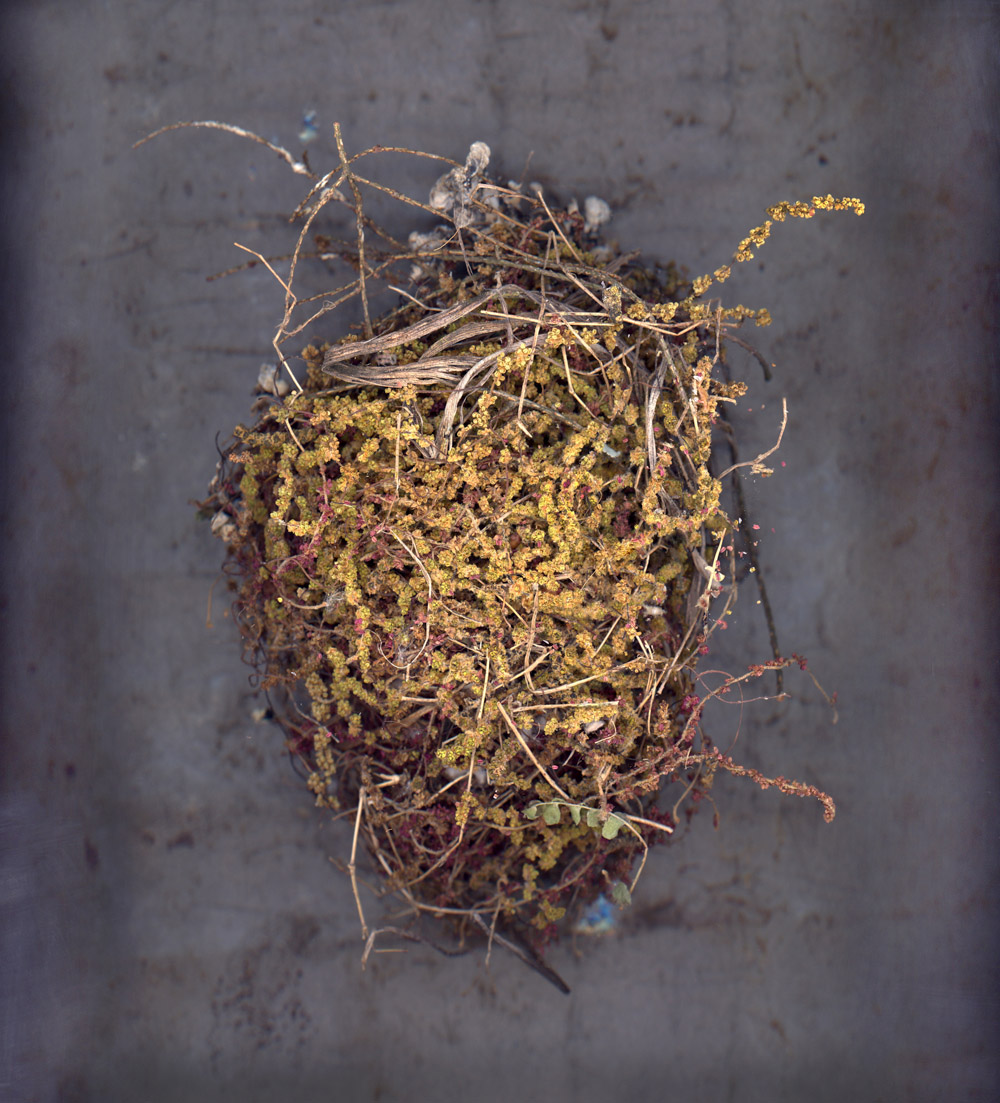The Asheville area has long attracted out-of-state painters, photographers and indie crafters. But what happens after these creative non-natives decide to trade visitor status for residency? Transplants, an art exhibit opening Friday, Aug. 4, and running through Sunday, Sept. 24, at the Tracey Morgan Gallery, seeks to answer that question.
“Personally, I had a hard time transitioning,” says gallery owner Tracey Morgan. She and her husband, a West Asheville beer pundit who prefers not to be named, always knew they would one day leave New York City to start an art gallery and bar, respectively. Since opening either in the Empire City wasn’t financially feasible, the couple decided on Western North Carolina.
“My husband has family in Fairview and Gerton, and we went to school at Brevard College,” says Morgan. “We were pretty familiar with the area.”
But when they finally made the move in 2015, Morgan felt out of place. She missed the city, her friends and, above all, New York’s arts scene. “I just put my head in the sand and pretended like it wasn’t happening,” she admits. Today, it’s hard to imagine Morgan feeling like an interloper. Since opening her South Slope space in January, she’s been well-received. “The positive response has been overwhelming,” she says.
Still, she wonders: How do other newcomers navigate Asheville’s art community?
Transplants meditates on that question by gathering the works of seven recent arrivals — Hannah Cole, Colby Caldwell, Molly Sawyer, Ralston Fox Smith, Kirsten Stolle, Dawn Roe and Workingman Collective — in one gallery.
The idea, says Morgan, is to start a dialogue on how place informs art. Since making the move, New York City-based painter Cole, for instance, has seen her pieces evolve from hyperrealistic renderings of manhole covers and high-rises to chicory against concrete walls. “Her work has transitioned from everything urban to everything Asheville,” says Morgan. “She paints what she sees.”
That growth mirrors what Caldwell — one of the show’s two photographers — experienced when he headed back to the mountains. Though originally from Mills River, Caldwell had settled in Washington, D.C., in his 20s. Later, when he began teaching at a small liberal arts college in Maryland, he took up residence on a 150-acre estate adjacent to the Chesapeake Bay. That coastal landscape influenced his photography — overexposed shorelines can be seen in 2003’s “Still Life” series and distorted marshes in “Songs” from 2002.
But since returning to Asheville in 2013, his experimental projects have been inspired by people. “I couldn’t see any neighbors where I lived in Maryland,” says Caldwell. “In Asheville, I’m situated in an active community, and I can feed more off artistic folks than the landscape.”
That synergy motivated Caldwell to open REVOLVE on Riverside Drive. Part studio, part gallery and part think tank, this hub strives to “gather in one place the creative energies of the Asheville area.” More simply, it’s there to support artists with feedback, ongoing exhibitions and whatever else they might need.
Community spaces are especially important for newcomers, says Caldwell. When he first moved to WNC, hotspots like Asheville Darkroom, the Center for Craft, Creativity and Design, and The Mothlight made for prime networking territory. Such places are where he hit it off with painters Ursula Gullow and Julyan Davis, and, in doing so, forged connections in the arts community. He sees the Tracey Morgan Gallery as another spot where non-natives can find their way.
“When Tracey came onto the scene, everyone was excited,” says Caldwell. That’s perhaps, he assumes, because her curating style is unique for the mountains. Her approach is minimalistic. Other than rotating shows and group exhibits, the walls remain bare, giving the gallery an ultramodern and edgy feel. Plus, featuring fewer artists at once creates a “purposeful conversation,” says Morgan, though she’s still not sure what Transplants conveys.
“I guess it says something about Asheville,” says Morgan. “Most artists move to Asheville because of the quality of life. They can live here without working four different jobs. They have time to create.”
Caldwell agrees with that. The work he submitted for Transplants contemplates what photography means in the 21st century. Using a variety of sources (corrupted files, found specimens and scanners), he’s created abstract images. An untitled piece, for instance, features a crumpled songbird against a rich cadmium background, while “Mirror, Mirrored” displays organic materials on slate. Such natural motifs will complement Roe’s photography, which typically juxtaposes household items — foil or mesh — with striking landscapes.
“It comes back to dialogue,” says Caldwell. “Most people think photography is this flat, two-dimensional thing tucked behind frames. My work has a whole different physical presence.”
And, arguably, so does Asheville.
WHAT: Transplants
WHERE: Tracey Morgan Gallery, 188 Coxe Ave., traceymorgangallery.com
WHEN: Opening Friday, Aug. 4, 6-8 p.m.




Before you comment
The comments section is here to provide a platform for civil dialogue on the issues we face together as a local community. Xpress is committed to offering this platform for all voices, but when the tone of the discussion gets nasty or strays off topic, we believe many people choose not to participate. Xpress editors are determined to moderate comments to ensure a constructive interchange is maintained. All comments judged not to be in keeping with the spirit of civil discourse will be removed and repeat violators will be banned. See here for our terms of service. Thank you for being part of this effort to promote respectful discussion.